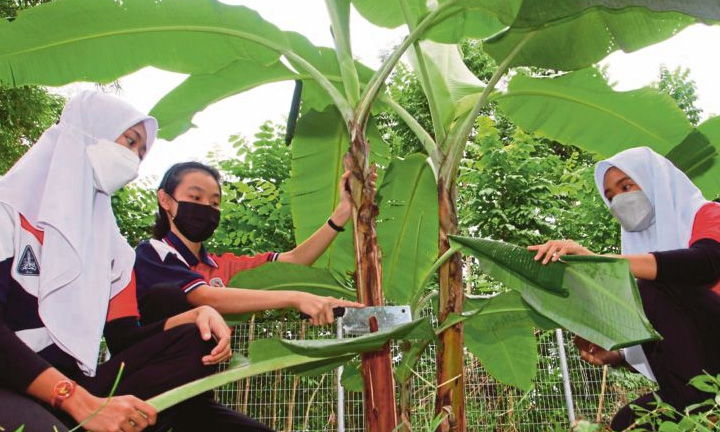SOURCE: Vincent D’Silva, New Strait Times
Three Form Four students of SM I.J. Convent here won second prize at the National Tinkering Challenge 2021 held in Kuala Lumpur recently for developing packaging material from banana stems.
Some 200 students nationwide took part in the competition, which called for submissions for discoveries that are useful to society.
The SM I.J. Convent’s team submission was part of their quest to find a replacement for plastic packaging, which is a hazard to the environment.
The British Broadcasting Corporation reports that 380 million tonnes of plastic waste are generated every year, and phasing out plastic packaging material will take a long time.
It all started when a member of the SM I.J. Convent trio, Angeline Lee Pei Shih, was clearing her backyard of banana leaves and stems, when she recalled reading about how agricultural waste could be transformed into something useful.
Lee said she had known that waste from pineapple plants could be made into textiles and paper products.
“I figured, why not waste from banana stems?”
She had seen how during the pandemic her family ordered goods that were wrapped in plastic.
“The goods came with lots of plastic packaging. This was troubling because I knew plastic was not biodegradable,” said the 16-year old.
“I pondered about a replacement for the plastic packaging,” she added.
Lee teamed up with schoolmates, Roza Anim Amim and Nurin Batrisyia Muhammad to research turning banana waste into something useful.
An Australian research paper detailed a way to extract nanocellulose from banana stems to make a transparent film resembling plastic. But unlike plastic, nanocellulose is plant-based, non-toxic and biodegradable.
Angeline believed more economical ways could be found to extract nanocellulose from banana stems.
“We have the replacement for plastic packaging, but the process of extracting nanocellulose must be cost-effective.”
The trio credited their teachers Wan Nor Amirah Wan Mohammad Din, Aziemah Zaini and Mohd Hakimi Asyraf Salleh for guiding them to generate nanocellulose.
Roza Anim said clinching second place took hard work.
“It was no easy task, but with determination and teamwork we did our best,” said Roza Anim.
Nurin Batrisyia said the trio spent days and nights on this research.
“We did not expect to win as we were up against teams from schools all over the country.”
School principal Ande Noor Munawara Bachok said she was delighted with the girls’ achievement.
She said the competition was an ideal platform for students to be exposed to science and technology, adding that “it allows students to harness their full potential”.

